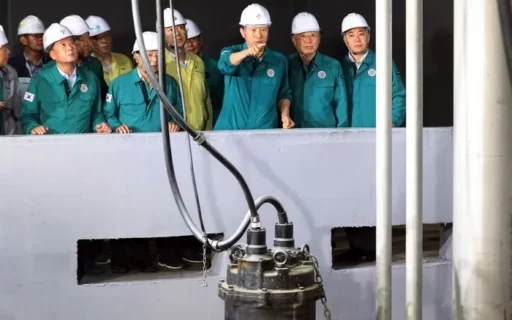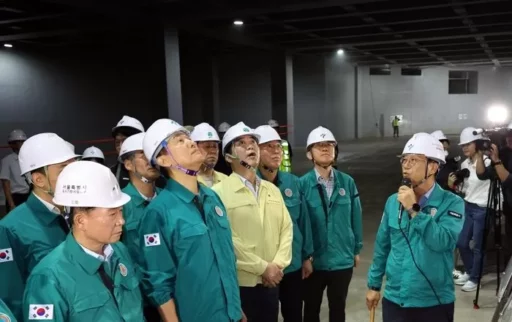Seoul City Conducts Inspection of Flood Prevention Facilities Ahead of Rainy Season
Seoul Mayor Oh Se-hoon has initiated on-site inspections to prevent flooding damage ahead of the rainy season.
On the morning of the 18th, he visited the rainwater retention facility at the Sillim Public Garage in Gwanak-gu and the Yeonggok-dong Underpass in Seocho-gu to closely examine the operational status of the flood prevention facilities and the emergency response system for heavy rainfall.

First, Mayor Oh visited the Sillim Public Garage to check the operational readiness of the large-scale rainwater retention system installed on the second underground floor. He verified detailed aspects, including the readiness of the storage facility, the operation preparedness of the pump equipment, and the operation plan for the automatic control system.
The rainwater retention facility at Sillim Public Garage is a composite structure, utilizing the ground level and the first underground floor as a bus parking lot, while the second underground floor is designed as a rainwater retention facility.
This retention facility has the capacity to temporarily store 35,000 tons of rainwater, based on a rainfall of 95.9mm per hour. In the event of flooding, the operation involves closing the sluice and activating the pump to discharge water forcibly to external rivers.
Flood Prevention System Ready for Operation
The Seoul City expects that this retention facility can lower the water level of the Dorim Stream by about 10cm, effectively reducing the risk of flooding in the Samsung-dong and Seorim-dong areas of Gwanak-gu.
Next, Mayor Oh visited the Yeonggok-dong Underpass to check the operational status of the automatic vehicle entry blockage system, which activates during heavy rainfall.

On-site, a demonstration of the vehicle entry blockage system utilizing flood detection was conducted. The warning sound and 'No Entry' electronic sign were activated, and the automatic barrier preventing vehicle entry was checked for its operation.
This system is a key facility that automatically controls vehicle entry during flooding to prevent loss of life and property damage, and its importance has become increasingly highlighted, especially after the Osong Underpass incident in 2023.
There are a total of 95 underpasses in Seoul designated for the installation of entry blockage facilities, which was originally scheduled for completion in 2033. However, to ensure citizen safety, the timeline has been advanced by eight years for early completion within June of this year.
Early Completion within June of This Year
Strengthening Systematic Management for Flood Disaster Preparedness
Seoul City has established a system to deploy two personnel immediately to the site upon the issuance of heavy rain advisories, blocking vehicle entry if the water level rises by more than 10cm or if the possibility of river overflow is detected.

Mayor Oh meticulously reviewed the operation of the four-person management system (two maintenance agency personnel, one autonomous disaster response team member, and one police officer) for each underpass, urging thorough management.
After completing the on-site inspection, Mayor Oh stated, "Public concern over underpass accidents has been significant since the Osong Underpass incident," and emphasized, "We have finalized the entry blockage facilities in all 95 underpasses in Seoul during the first half of the year, with nearly all construction completed to prepare for any potential incidents."
He further highlighted, "During the upcoming rainy season, we will collaborate closely with the fire department and police, doing our utmost to prepare for any possible damage."
Image source: Mayor Oh Se-hoon inspects the flood disaster preparedness site at the rainwater retention facility construction site at the Sillim Public Garage in Gwanak-gu, Seoul, on the 18th. / News1, News1


